- Register
- Log in to Tune-In
- Wishlist (0)
-
Shopping cart
(0)
You have no items in your shopping cart.
Beatles News

Ron Howard wants to make a follow-up to his rock documentary The Beatles: Eight Days a Week - The Touring Years.
The 62-year-old filmmaker has edited archive material, unearthed new footage of The Beatles in concert and even obtained unseen home movies from Paul McCartney to tell the story of the band's early touring years.
Howard says he was so taken with the subject he'd love to make another film about the history of the Fab Four. "I found this (making Eight Days A Week) to be so fascinating that I'd be very open to that," he tells British newspaper The Times.
"I found this (making Eight Days A Week) to be so fascinating that I'd be very open to that," he tells British newspaper The Times. The film is the first since the band's 1970 split to be authorised by McCartney, drummer Ringo Star, as well as the widows of late bandmembers George Harrison and John Lennon, Olivia Harrison and Yoko Ono.
It mainly examines the years when the iconic group performed live, from early gigs in the Cavern Club in Liverpool, England in 1962 until a final concert in Los Angeles' Candlestick Park in 1966.
Howard tells the newspaper he shied away from the darker aspects of the group's story, saying he did not details

On September 11, 1967, the Beatles undertook a fateful course—one that would humble them profoundly in the coming months: with the recent triumph of Sgt. Pepper’s Lonely Hearts Club Band and the international simulcast performance of “All You Need Is Love” under their belts, they tried their hand, bizarre as it may seem in retrospect, at becoming film directors.
John Lennon, for one, recognized the dangerous waters that the Beatles had been trolling in since manager Brian Epstein’s untimely death only a few weeks earlier. As Lennon later remarked, “I knew that we were in trouble then. I didn’t really have any misconceptions about our ability to do anything other than play music. And I was scared.”
To Lennon’s credit, he understood intuitively that while their work as composers and their musicianship may have been unparalleled, such skills didn’t necessarily prepare them for making movies. But with Paul McCartney eager to see the Beatles make their mark in those post-Pepper, post-Epstein days, they amiably trudged on.
McCartney fashioned the idea for the group’s latest film project on traditional English day trips to the countryside. As McC details
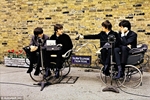
No adjective can adequately convey how huge The Beatles already were on October 16, 1963, when director Richard Lester watched them arrive at London’s Playhouse Theatre and struggle good-naturedly through a fever-pitch crowd of teenage boys, screaming girls, reporters, photographers and news crews.
Inside, he saw them deal with a put-upon BBC radio producer and other clamorous claims on their attention with humour, command and a straightforward lack of pretension. These boys, he thought to himself, were naturals.
Film always interested The Beatles, and Lester was there at the audition to direct their first. ‘We were asked to sniff around each other, like dogs, to see whether we would get on,’ Lester recalls. ‘What came out was that we each knew the kind of film we didn’t want to make.’
A Hard Day’s Night was their first film for one reason: they said no to at least five others. Invitations started arriving in February or March 1963, and each was batted away. As Lennon explained in Melody Maker in June 1963, ‘We prefer to wait until we find a film with a good plot that will hold the interest. Otherwise it might do us more harm than good.’
In Li details
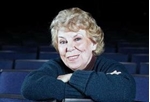
Although she has never been to the capital of Kansas, Louise Harrison said she expects to feel as though she is with loved ones when she appears with the Liverpool Legends, a Beatles tribute band, Sept. 24 at the Topeka Performing Arts Center.
“I always thought that all of the Beatles fans of the world were my extended family,” the 85-year-old sister of the late George Harrison said recently by telephone from a Liverpool Legends tour stop in Chicago. “I very much feel that way when I’m among their thousands of fans.”
Harrison will be with the Liverpool Legends, a tribute act whose members she handpicked and calls “the very best reproduction of a Beatles band that I’ve ever seen,” at the 7:30 p.m. Sept. 24 concert in TPAC, 214 S.E. 8th, to share some of her stories about her kid brother, whom she held in her arms hours after his birth at home in Liverpool, England.
“We were all born at home. It was the same midwife that birthed us all,” said Louise Harrison, the eldest sibling and only sister of George Harrison, who had two other brothers. Louise was 11 when George, the youngest of her brothers, was born.
“I helped him learn how to details

Look at this picture of The Beatles performing at the Cavern Club in 1962. What do you notice? The cramped confines of the club? George Harrison’s youthful face, innocent of the onrushing tsunami of global fame? Now look at the audience.
Notice anything missing... boys. The Beatles were not the first performers to appeal to teenage girls – but as an enthralling new film, Eight Days a Week – The Touring Years, vividly shows, in their early years the Fab Four brought fan mania to hitherto unknown heights of hysteria.
Mass stage invasions, faintings, hospitalisations – The Beatles were the first boy band, before anyone had thought of the term. The marvellous, timeless songs might also have had something to do with it. By 1966, the clamour around them had become so great that it was impossible for the group to tour.
They retreated into the studio to record Sgt. Pepper’s Lonely Hearts Club Band, and a new era had begun. ‘What place,’ Paul was asked on the group’s first American tour in 1964, ‘will The Beatles have in the history of Western culture?’ ‘You must be kidding with that question!’ he replied.
By: Mick Brown
Sourc details
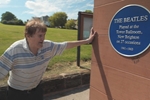
Documentary films often stir up controversy, but they usually wait until after they’ve started screening to do so – and most of the time, it’s the political or issue-oriented docs that cause a fuss, not films about show business.
But “The Sixth Beatle,” which had its world premiere at the Toronto International Film Festival on Thursday night, is an exception to both those rules.
The film opened with an unusual and lengthy disclaimer stating that author Mark Lewisohn, one of the world’s foremost Beatle historians, felt that “many of the comments” made in the film “allege matters that are factually erroneous.” It went on to say that Lewisohn’s scenes, which are numerous and offer key perspective, would be deleted from the film after TIFF.
In the Q&A that followed the premiere, co-director Tony Guma responded to a question from TheWrap by saying that Lewisohn did a 90-minute interview for the film, but “didn’t like some of the stories” that are told in the film.
“We don’t know specifically what his problems were,” he added. “But we do know that he has been hired in the past by Apple [the B details
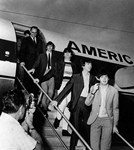
I remember well how my love affair with my Beatles started. On school nights, as a teenager, when I should have been asleep, I would instead huddle under a blanket in my bedroom, transistor radio hugging my ear, listening to “white music” on the high wattage WAPE (“Big Ape”) station. By day, meanwhile, I lived a rhythm and blues life in my all-black community in Jacksonville, Florida, in the segregated American South. It was a time of racial apartheid and turbulent resistance that was peaking in the 1960s. Through movies and television I was glimpsing a larger world of racial possibilities. I was a misfit teenager, ripe for change.
And then, during one of those nighttime rituals, I heard the Beatles wailing “I wanna hold your haaaand….”
I found out that they were young – from England of all places, so, surely they weren’t really white. Their songs had a forceful, funky dance beat and vocal swirls like the singers blasting from our record players and the local “black” radio station. They were brash and unafraid to break rules, fitting right into the times – at least as far as I was concerned. In addition, they had working class roots that se details
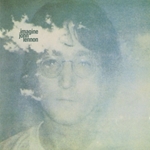
What do you think of when you hear the name John Lennon? He’s an icon and an innovator, but he is so much more and has created a legacy that will last for the ages, both with The Beatles and in his solo career.
Without him, so many songs would have gone unwritten and music history would be drastically different. His 1971 album Imagine is just like him, a moving piece of artistry punctuated with famous singles and strong messages that are a testament to history.
Before even talking about the music on the album, I have to first talk about the man behind the songs. Lennon is one of the greatest musicians of his time. His abilities shone when he was with The Beatles, co-writing many classics with Paul McCartney. After the band broke up between 1969 and 1970, Lennon embarked on a solo career.
Imagine, his second solo album, was released in 1971, with massive social upheaval from the ‘60’s coming to a close but still prominent enough that major themes carried over into the message of many tracks.
The overall tone leans towards almost bitterness throughout the album, about both the tensions between Lennon and McCartney at the time and antiwar sentiments. It may be hard to reach, as it details
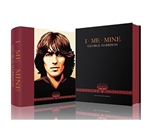
Described in a press announcement as “the closest we will come to George Harrison‘s autobiography,” Genesis Publications is issuing I Me Mine – The Extended Edition, which now spans the length of Harrison’s lifelong work in music, told in his words. The new book encompasses 141 songs, lyric sheets and photos – many unpublished until now. The expanded version is being released on October 4 in the U.K. and October 18 in the U.S.
I Me Mine was originally published in 1980. It took its name from a Harrison composition on The Beatles‘ Let It Be album and is said to be the final track recorded by the group.
“Writing a song is like going to confession… writing songs to try and find out, to see who you are.” – George Harrison in I Me Mine –
The Extended Edition In conversation with his friend and former Beatles press officer Derek Taylor, and in a first-person commentary that accompanies his songs, Harrison’s own words recount everything from his upbringing in Liverpool, to early Beatlemania and his spirituality and philosophy.
I Me Mine – The Extended Edition documents Harrison’s songwriting from 1963 to 2001.
details
A new feature film is taking a deep dive into the tragedy on Dec. 8, 1980 that took the lives of one of the world’s most iconic songwriters. The Lennon Report -- in theaters and on demand Oct. 7 -- gives a dramatic look at what transpired behind the scenes when John Lennon was rushed to Roosevelt Hospital.
That night, it just so happened a young news producer (played by Walter Vincent) was at Roosevelt after sustaining injuries in a motorcycle accident. Once he realizes the identity of the shooting victim beside him, it’s clear he’s got an awfully big story on his hands. In the brand new trailer, the filmmaker attempts to get word out while the hospital staff tries to keep it under wraps and save Lennon’s life.
Richard Kind plays the emergency department’s director and Tony award winner Stephen Spinella plays its vascular surgeon, both tasked with trying to keep the former Beatle alive, while the rest of the staff deals with the deluge of press and frenzied fans. Adrienne C. Moore plays Dr. Pamela Roberts and David Mayas portrays Security Officer Medina.
The film was written by Walter Vincent and director Jeremy Profe and produced by Gabriel and Rafael Francisco.
By: details

In 1965 The Beatles played New York's Shea Stadium, and no one could hear a thing. Now the film of the show has been polished to 4K perfection and the sound revived, and it's amazing...
The documentary film of The Beatles' Shea Stadium show has never been officially released on video or DVD, but has been given a serious lick of paint to accompany Ron Howard's Eight Days A Week – The Touring Years movie. Here's what we learned.
1. The noise is intense
It might be stating the bleedin' obvious, but the noise created by 55,000 screaming girls and their presumably perplexed guardians is enormous, especially when it's pumped through a cinema PA. Like a swarm of bees engaged in a fight with another swarm of bees. At an airport. As the Space Shuttle departs.
2. The band look bemused
In these days of stadium tours and outdoor festivals it's easy to take big crowds for granted, but back in 1965 this was all new. And, for the most part, the band look somewhat bewildered as utter carnage unfolds in front of them. 3. No one claps At the end of each song the screaming rises to a new crescendo, but there's very little actual applause. And the overhead shots that sweep the crowd don't show people w details

It helps if you look like him, but anyone thinking about presenting himself as John Lennon on stage better have the chops to go with resemblance. Carm Castiglione knows that rule well. There are Beatles fans, and then there are Lennon fans and they don’t suffer fools gladly.
Lennon wasn’t just a voice for his generation, even in death he’s been a voice of following generations as well. So don’t hit the stage with a set of round glasses and the notes to Imagine. There’s a lot more to it than that. “I’m a fan of each Beatle. I like every Beatle,” Castiglione said. “I just started doing John Lennon a year ago. I think everything happens for a reason and I think the time is right to do this now. It doesn’t hurt the fact that I look like him and I really love his songs. John Lennon’s music really resonated with me. I’m also a composer and I find that John Lennon’s music has its dark side and I can relate to that.”
Castiglione will be performing at the first London Beatles Festival Sept. 23-25 at London Public Library’s Wolf Performance Hall and various other downtown venues.
“It’s one thing to try to sound li details
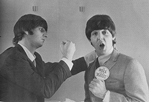
Former Beatles band mates Paul McCartney and Ringo Starr recently came together in Las Vegas to give a rare joint interview with the Los Angeles Times to chat about the upcoming documentary Eight Days a Week — The Touring Years. The Ron Howard-directed film, which gets its theatrical premiere on September 15, focuses on the Fab Four’s career through the band’s final official concert in August 1966.
McCartney and Starr both noted that watching the movie helped jar their recollections of that time period, during which the band was subjected to unprecedented fan hysteria while touring the world.
“The stuff you remember when you see the footage, and the old photographs, it helps,” explained Starr. Added McCartney, “It jogs all the memories. That’s one of the joys about seeing the film.”
McCartney also told the L.A. Times that the movie reminded him about his band’s strong anti-discrimination stance in the U.S., as the film showed an archival rider revealing that The Beatles refused to play concerts at segregated venues.
“We’d always naturally had an empathy with [civil-rights issues], just because we had loads of black friends and [man details
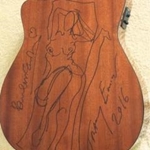
Sir Paul McCartney and artist Tracey Emin have come together to create a unique guitar to help celebrity chef Mark Hix raise money for Cancer Research UK.
The acoustic guitar features a drawing by Emin of a nude woman on the back of the instrument and is signed by both Emin and McCartney. The guitar is estimated to be worth thousands of pounds and will be a prize a raffle Hix is putting on during a big charity event in Dorset. He is aiming to draw thousands of amateur guitarists to play together on a Dorset beach to set a new record as Britain’s biggest band.
Article continues below Named ‘Guitars On The Beach’, the massive event runs alongside his food festival Food Rocks in the seaside town of Lyme Regis over the weekend of September 3-4. A London art collector has estimated that it could raise as much as £50,000 at auction - but instead the Guitars On The Beach team is raffling it for just £1 a ticket, so that everybody has a fair chance of winning.
Hix commented: “Tracey and Paul have really turned up trumps. She has created a stunning Tracey Emin original of a topless woman sunbathing on a beach and both she and Paul have signed it, making the guitar a much-prized details

A copy of The Beatles' 1968 "White Album" sold for $790,000 USD at Julien's Live Auction in December 2015. That's officially the most expensive record ever sold at auction, Guinness World Records confirms in its 2017 edition — more than double the $305,000 Elvis Presley acetate that previously held the title.
Now, before you're like: "my mom's got one of those downstairs" or "I saw, like, 20 copies at the flea market last weekend" or "I'm using one of those as a coaster for my bubbler," know that this was a very special copy. Stamped with the serial number "0000001," it's the very first pressing, long thought to belong to John Lennon, but actually, kept in a bank vault in London by that sneaky Ringo Starr for more than 35 years.
It was expected to fetch between $40,000 and $60,000 USD after numbers 0000005 sold for $30,000 in 2008 and 0000023 got $13,750 in 2012, but the gavel price smashed all estimates, raising a handsome sum for Starr's charity benefitting social welfare, The Lotus Foundation. The buyer's identity is unknown. Let's hope it's not Martin Shkreli.
Guinness is really into music right now, it seems.
By: Chris Hampton
Source: Chart Attack
